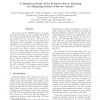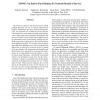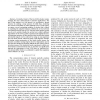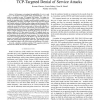IJSN
2006
14 years 3 months ago
2006
: Denial of Service (DoS) attacks can be easily launched in Wireless Sensor Networks (WSNs). Due to their resource constraints, namely limited energy, memory and bandwidth, WSNs ar...
ANSS
2003
IEEE
14 years 8 months ago
2003
IEEE
The main goal of the NETSEC project is to design and implement a framework for mitigating the effects of the node-based and link-based DoS attacks. Our strategy employs three lin...
NDSS
2005
IEEE
14 years 8 months ago
2005
IEEE
We present a solution to the denial of service (DoS) problem that does not rely on network infrastructure support, conforming to the end-to-end (e2e) design principle. Our approac...
LCN
2005
IEEE
14 years 8 months ago
2005
IEEE
— Currently, Denial of Service (DoS) attacks remain amongst the most critical threats to Internet applications. The goal of the attacker in a DoS attack is to overwhelm a shared ...
TRIDENTCOM
2006
IEEE
14 years 9 months ago
2006
IEEE
—In this paper, we investigate the applicability of simulation and emulation for denial of service (DoS) attack experimentation. As a case study, we consider low-rate TCP-targete...
ICON
2007
IEEE
14 years 9 months ago
2007
IEEE
Denial of Service (DoS) attacks have continued to evolve and they impact the availability of Internet infrastructure. Many researchers in the field of network security and system ...
ICCCN
2008
IEEE
14 years 9 months ago
2008
IEEE
In this paper we investigate a special type of denial of service (DoS) attack on 802.11-based networks, namely deauthentication/disassociation attack. In the current IEEE 802.11 s...
ASIACRYPT
2009
Springer
14 years 9 months ago
2009
Springer
Computational puzzles are mildly difficult computational problems that require resources (processor cycles, memory, or both) to solve. Puzzles have found a variety of uses in secu...




